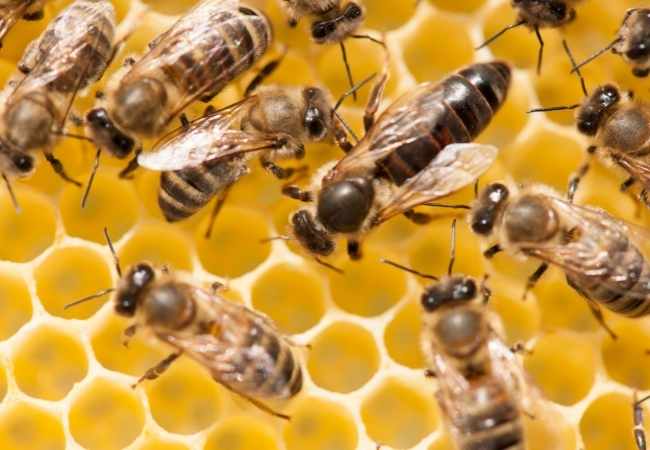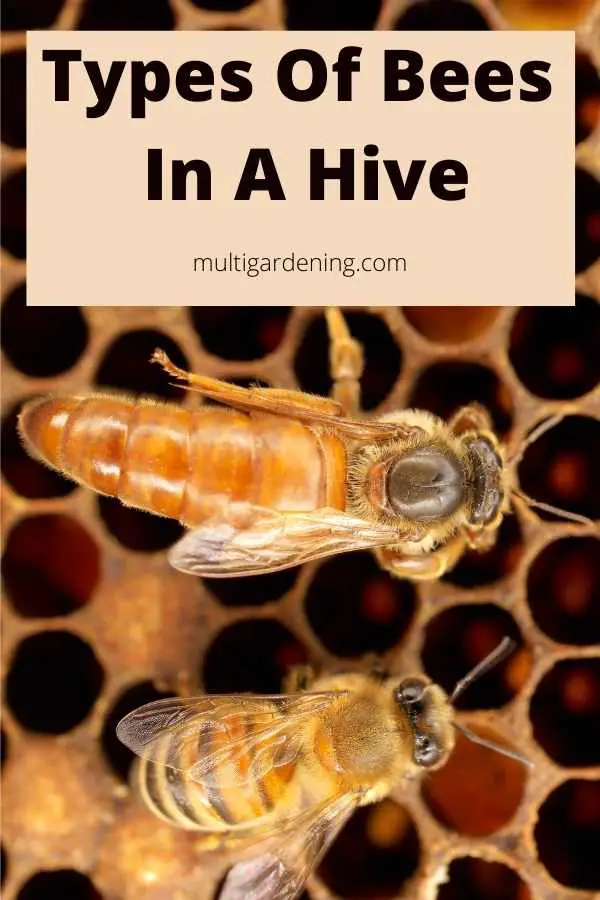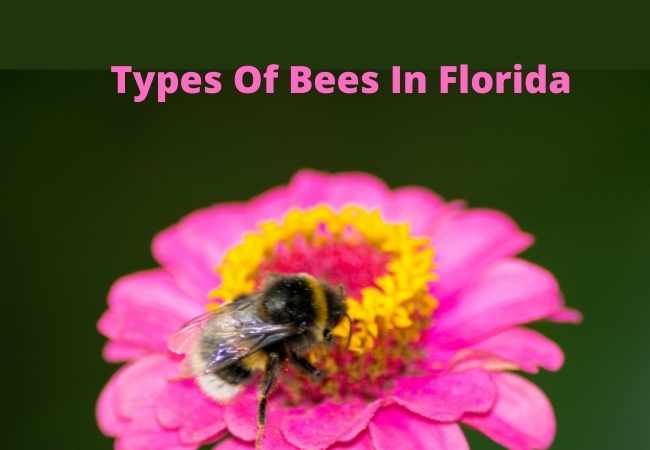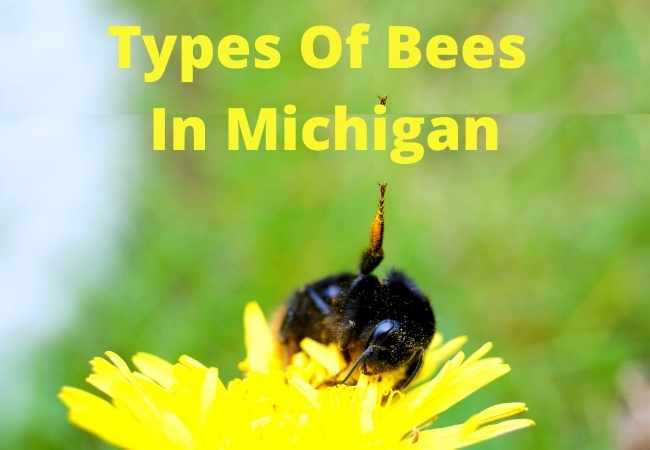Types of Bees In A Hive

There are different types of bees in a hive that we as beekeepers should know. Being successful in beekeeping requires good management, interest, and patience. You also need to have a clear understanding of the life cycle of the whole colony.
Hands-on involvement in beekeeping will help you gain knowledge and value the factors that can make the whole colony happy as well as learn the factors that can provoke them.
Types of Bees In A Hive
The worker bees make up almost the entire colony, a few hundred drones, ran by a lone queen bee. Honey bees are some of the remarkable insects we have. Around 60,000 bees can be present in a colony if it’s the peak of summer.
Queen Bee
In a colony, there is only one queen. She’s the one who manages the colony and the only fertilized bee. She determines the characteristics of all the bees present in the colony.
She determines their behavior, mood, and disease resistance. She has a significantly longer abdomen compared to the other bees making her the largest bee in the colony.
The queen bee spends most of her life in the hive. The only time she also flies away is to go mating. A young virgin queen goes mating with many drones.
The mating process provides her with enough sperm that will fertilize her eggs that will be laid after 3-5 years. Thousands of eggs are laid every day by the queen bee to make sure the colony survives in the environment.
She’s closely guarded by the worker bees all the time. The worker bees are also responsible for feeding the queen bee.
The queen’s mood dictates the colony’s mood and situation. If the queen is irritated then the whole colony becomes aggressive.
On the other hand, when she’s passive the colony remains calm. The colony’s mood can change very quickly sometimes within a few hours.
The queen bee also has the responsibility of leading the other bees in finding a new nest. Wherever she goes all the other bees follow her.
Worker Bees
All the unfertilized female bees are what are known as worker bees. Most of them only live around 4-5 weeks in the busy summer months.
They are small in size and work tirelessly doing all the duties of maintaining the hives. The tasks that a worker bee undertakes are determined by its age.
In the first 2-3 weeks the worker bee’s life its duties include cleaning the brooding space. During this period, the worker bees are also responsible for clearing away all the remains of the hive.
These young worker bees are the ones who feed the larva and seal the cells when the grub turns into a pupa.
They also attend to the queen bee and remain by her side. They escort her everywhere and also feed her.
The worker bees are also the ones who produce wax which is needed in drawing a new comb. They receive and store nectar that is being brought into the hive. They also seal the stores when the comb is filled with ripe honey.
Whenever pollen and propolis are brought into the hive the worker bees store them away. They also guard the hive’s gateway.
When a worker bee turns 18 days old, their responsibilities change. The older worker bees are required to forage for water, nectar, pollen, and propolis from as far as 2 or 3 miles.
Check this post on do bees sleep in flowers? to learn more about how bees collect nectar and pollen.
Drone Bees
A drone be is a male bee in the colony. The drone bees are slightly bigger than the worker bees but not as big as the queen bee. They also have a heavier, rounder look and have no sting.
The primary purpose of the drone bees is to fertilize the virgin queens. They don’t forage for nectar. During the peak of the honey season, hundreds of drone bees can be found inside the hive.
On the other hand, when it is autumn, worker bees drive the drone bees out of the hive. This is one of the actions they take to conserve the honey quantities and its by-products available in the hive.
Honey bees don’t hibernate during winter. The bees remain inside the hive and bunch together. How much they move around depends on the prevailing weather conditions. The colony in the hive survives by eating the honey and pollen they had collected during the summer months.
Final Thoughts
Learning about bee types is important if you are just getting into beekeeping or just want to know about bees. I find bees to be interesting and beekeeping is an interesting hobby that can be turned into a profitable business.
I hope you found some useful information on this post about the types of bees in a hive. Please share it and also follow Multigardening Pinterest for more on beekeeping.






